Sunday Runday
In this weekly column, Android Central Wearables Editor Michael Hicks talks about the world of wearables, apps, and fitness tech related to running and health, in his quest to get faster and more fit.
Wrist-based running dynamics, aka running form analysis, is the hot new thing for fitness watches. Garmin, COROS, Apple, and Samsung (among others) will analyze your cadence, stride, balance, and power. The question is, can amateur runners use this information to improve without injuring themselves? I spoke with Garmin Forerunner product manager Joe Heikes to find out.
Heikes warned me that “form improvements are pretty tough because they often feel unnatural.” Trying to self-correct your below-average running dynamics will “produce less economical running” and keep you out of the zone. Neither novices nor running veterans benefit.
While Heikes doesn’t think runners “should obsess over these numbers,” he did explain several scenarios where acting on running form data will improve your abilities — with some effort and data study on your part.
Let’s dive into those scenarios and get you on track toward running more efficiently in terms of running form and power! Be warned: Running alone won’t be enough.
First, what are wrist-based running dynamics?
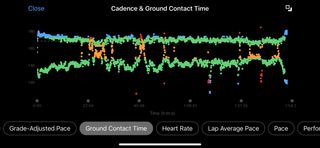
Let’s briefly run through the running metrics data that a fitness watch can collect, along with where you theoretically should be in each category.
Your cadence and stride length are your steps per minute and average step distance. Stride is partially height-dependent, but Garmin says that most runners average between 163–185 steps per minute for cadence, with taller runners falling on the lower side.
Vertical oscillation measures your torso’s vertical movement per step in centimeters. Experienced runners only move about 6cm up, while beginners waste motion with taller steps in the 10cm+ range, especially when pushing hard. Garmin combines your oscillation and stride data into a vertical ratio score, with lower percentages corresponding with better efficiency.
You also want as low a Ground contact time (GCT) as possible, with under 300 milliseconds as the usual baseline and elites hitting closer to 200 ms. If your stride is overly long or high, you’ll land longer and harder than you should, slowing you down and wearing down your feet with excessively hard impacts.
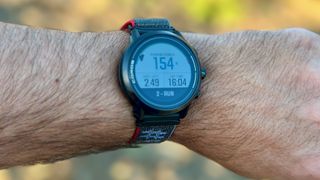
Average running power only partially belongs in this category, but it measures how much effort you put into a run. Ideally, you’ll want to use as little Wattage of power as possible while running at a good pace. A more efficient running form would help with this, but so would improving your VO2 Max. Generally speaking, the lower your average running power relative to your pace, the better.
Lastly, even the most advanced running watches, like the Garmin Forerunner 965, can only measure so much from your wrist. For metrics like GCT balance — which detects whether you spend more time on one foot than the other — or the peak ground reaction force your foot produces when pushing you off the ground, you need a separate pod accessory for your shoe or waistline, like the Garmin Running Dynamics Pod or COROS POD 2.
Changing your running form is risky
The more you run and the fitter you get, the more naturally “efficient” your running form will become. “There is no one-size-fits-all prescription for what to do with [running form] data,” Heikes says, and runners who have “many thousands of miles under their belts…might not be wise to monkey with it.”
When you look at a Garmin post-run summary, you can see how your cadence or vertical ratio compares to other Garmin runners. Yet this generalized graph can’t possibly account for factors like pace or height, which change how many steps you take per minute or how far your feet travel.
You may be below or above average for a very good reason, and prematurely “obsessing” over this by taking quicker or longer steps could stop you from finding your natural running form over time, Heikes warns.
This tracks with my interview with Roberto Mandje, former Olympian and NYRR director of Runner Training, a few years back. He warned me that by paying attention to running dynamics, you’ll start chasing “generic numbers from the internet…without knowing if you really should and exactly what your optimal cadence and stride length should be.”
Study your stats over time
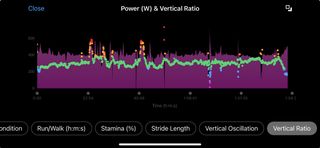
His disclaimer aside, Heikes isn’t saying to ignore your data entirely, merely to run long enough that you have a natural running form, and then tinker from there.
For any specific running metric, “look at how this data changes over time,” he explains. Compare two runs of similar lengths a year apart and see if your dynamics have changed in correlation with your improved (or worsened) VO2 Max. What’s (un)changed will help you gauge where to focus your future efforts.
Then, “compare the data from a fast run to a slow one” and see which metrics you change to gain speed. Heikes says, for example, that his cadence tends to stay consistent while his stride length increases, whereas other runners might focus more on faster movement with a consistent stride to run faster.
He also recommends looking at data graphs across a long race (like a marathon) to see “how fatigue shows up in the running dynamics measurements.” Maybe you’d see that your cadence shortens or ground contact time (GCT) gets too long, for instance, and use that data to figure out your stamina limits.
After you’ve figured out your averages for different types of runs, you could then try changing your running form and see the results, both for pace and metrics. Heikes gave the famous “run tall” example, saying you can “tell quantitatively how that is reflected in objective data” once you’ve established a benchmark to compare against.
Naturally improve your form with strength training
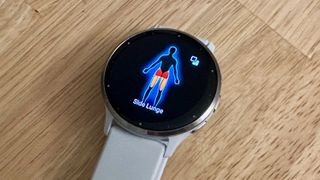
Heikes says his favorite running dynamic metric is GCT balance because he “had a couple of knee surgeries,” and it helps him catch “when I might be getting more imbalanced in my stride,” whether due to fatigue or because he needs to “do some strength training on the weak side.”
While he didn’t go into much more detail about this, other running coaches online will point you towards strength exercises as a way to improve specific running metrics. An imbalanced stride might push you to do more single-leg exercises, for instance.
COROS, which just released a running form test for watches like the PACE 3, has a “From Data to Action” guide for people scoring low in key areas, and most of its tips are (you guessed it) strength training. For example, fixing high GCT starts with burpees, mountain climbers, and other bodyweight jumps that get your feet off the ground quickly.
Lower-body exercises like squats, deadlifts, and calf/heel raises give you more powerful launches to improve your stride with less cardiovascular effort. More generally, core-strength workouts like planks help combat fatigue’s negative impact on your form across long races.
Rather than manually trying to change your running form, give your body the muscular tools to run more efficiently, with this “8-week strength training plan” as a solid starting point for runners.
I can’t stop you from checking your running dynamics data and actively changing your form to come closer to the average. However, from what I learned from various coaches and fitness brand experts, running dynamics is more useful as a benchmark, the same as VO2 Max or your estimated race paces.
The fitter and stronger you get, the more likely that your cadence, GCT, vertical ratio, and power efficiency will improve, especially for marathons where cardiovascular endurance isn’t enough. With runner-focused strength training, you’ll improve naturally without spending every run distracted by how high or long you’re stepping.
As for Garmin watches specifically, Joe Heikes says that the Forerunner product team believes “there is still a lot of application potential for the running dynamics data we currently provide and for other metrics we have been working on in-house. We are not yet done innovating in this area!” So, we may see new Garmin Coach tools or better indoor workouts focused on running dynamics in the future.










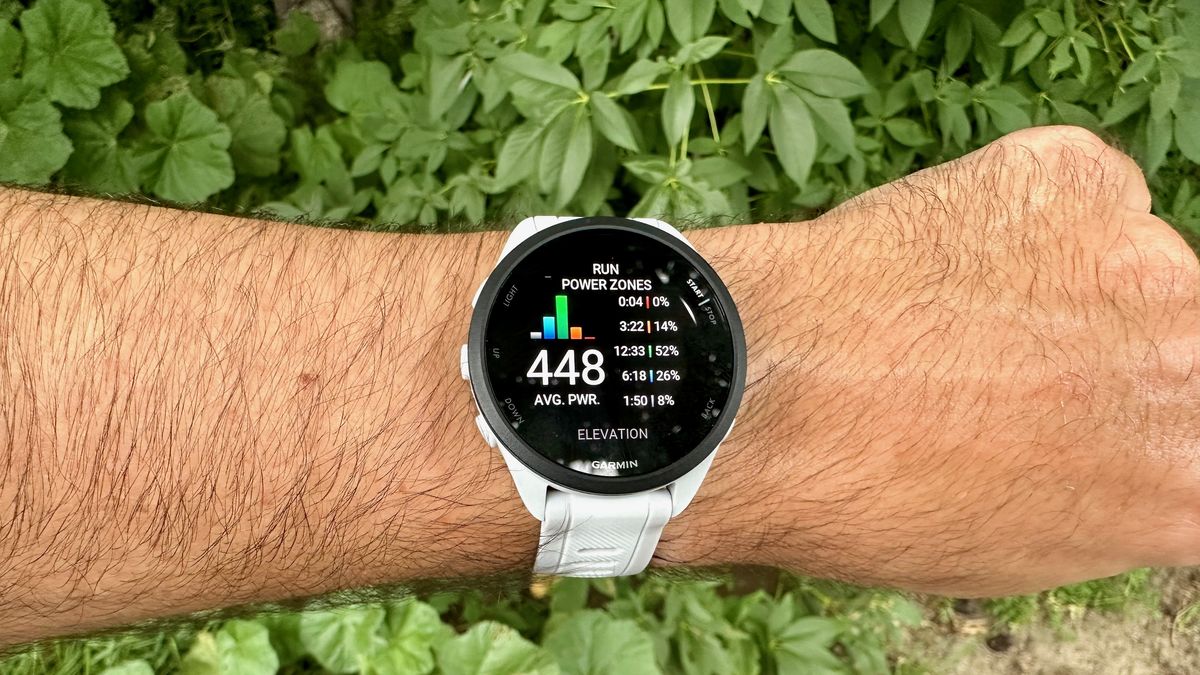









Discussion about this post